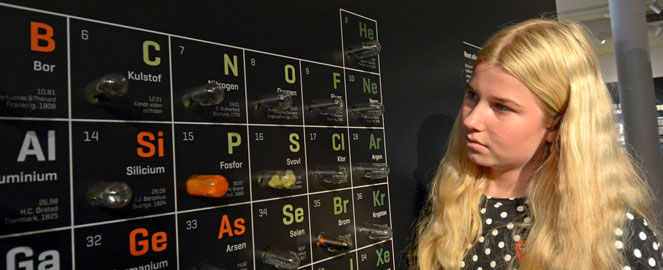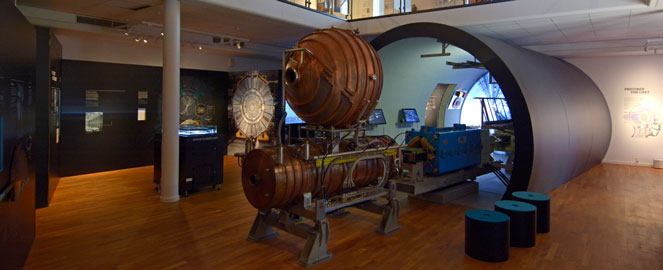THE INQUISITIVE MIND

A sensuous and physical experience
The exhibition is meant to stimulate the visitors’ curiosity by combining communication and scenography and thereby turning the exploration of atoms and light into a sensuous and physical experience for children and grownups.
In a 7-meter long tunnel, you can walk through the colours of the rainbow, feel the warmth of infrared light and draw using Ultraviolet Light.
By means of a video microscope, it will be possible to zoom in on yourself and others. You can also observe traces of the invisible particles from space that constantly bombard us and leave tracks in the exhibition’s cloud chamber.
In a life-size football game you can play with ”protons” and see how many new particles you can kick

Using the world’s biggest machines to search for the smallest parts of the universe
The exhibition also tells the story of how the Dane, Niels Bohr, followed his inquisitiveness and thereby came to develop a new theory of atomic structure – a theory that formed the basis for a completely new worldview.
When today’s scientists explore the atom and its components, they build the biggest machines in physics by using new technology developed for the purpose. Placed in the middle of the exhibition are heavy machinery from one of the world’s largest physics experiments at CERN in Switzerland. The size is hard to fathom – both of the machines and the small particles that they are built to investigate.
Through film, exhibited objects and personal narratives, the visitors can come to understand how the machines developed at CERN can help the doctors at Aarhus University Hospital to deliver a better and gentler radiotherapy to cancer patients.
Inquisitiveness can cause dilemmas
The exhibition also sparks a debate about how new discoveries and inventions can be both vital and at the same time have dangerous consequences which cannot always be predicted. Through atomic research, one of the things that has become apparent is the enormous energy that is hidden in the atom. This knowledge was used during WWII to develop the atom bomb and has since made it possible to use atomic power as an energy source – this form of energy however still creates disagreement. How should we regard a nearly CO2 free energy source that at the same time results in dangerous radioactive waste?
There are masses of dilemmas, and the visitors are invited inside to reflect and decide for themselves. Protest songs, news clips and newspaper front pages together with exhibited objects from Risø DTU tell the story of a long and still relevant discussion about the use of atomic power and nuclear weapons.
Thanks to:
Forskningsministeriets Tips- og Lottomidler
The cloud chamber in the exhibition is produced and partly sponsored by Nuledo
![]()